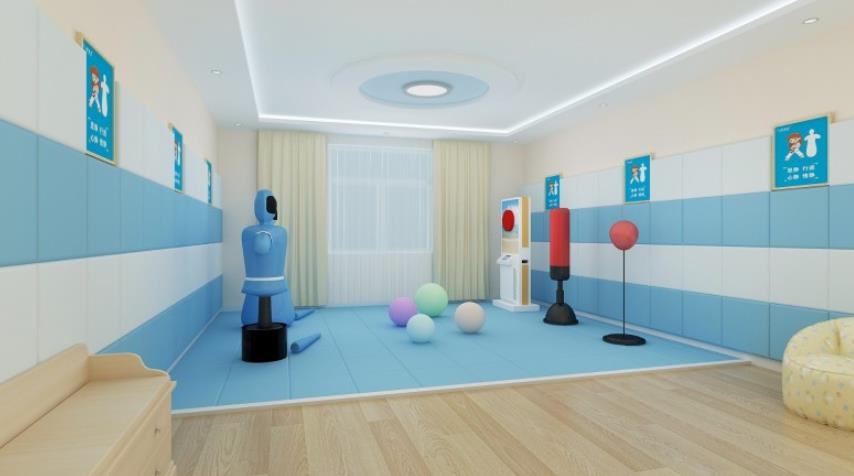|
本文是心理学专业的留学生Essay范例,题目是“Unconscious Thought Theory(无意识的思想理论)”,2004年,荷兰行为心理学家Ap Dijksterhuis发表了关于意识和无意识思维在偏好发展和决策中的作用的早期研究。两年后,在与L.F. Nordgren的合作中,Dijksterhuis在一篇关于无意识思维理论的开创性工作中完善了他的想法。 这篇论文从根本上扩展了行为心理学的领域,为当代研究带来了关于思维模式和决策过程的新问题。UTT的核心假设是,关于简单问题的决策可以更好地利用有意识的思考,而关于复杂问题的决策可以最好地利用无意识的思考(Dijksterhuis, 2006)。UTT区分了无意识和有意识的思想,并表示在Dijksterhuis的著作中阐述的特定情况下使每种模式更可取的特征差异(Dijksterhuis, 2006)。 Introduction介绍 In 2004, Dutch behavioral psychologist Ap Dijksterhuis published early research on the roles of conscious and unconscious thought in preference development and decision-making. Two years later, in collaboration with L.F. Nordgren, Dijksterhuis refined his ideas in a seminal work on the theory of unconscious thought. The paper fundamentally expanded the field of behavioral psychology, bringing into contemporary research new questions regarding thought patterns and decision processes. At its core, UTT postulates that decisions about simple issues can be better made utilizing conscious thought, while decisions about complex matters can best be approached with unconscious thought (Dijksterhuis, 2006). UTT distinguishes between unconscious and conscious thought, and denotes the differences in characteristics that make each mode preferable under certain circumstances elaborated in Dijksterhuis’ work (Dijksterhuis, 2006).
Since the creation of unconscious thought theory (UTT), scholars have developed the topic to be applicable to processes such as more complex decision-making, problem-solving and problem discovery, and creativity. Current research within the field has been conducted that yields both supporting and opposing data regarding the superiority of unconscious and conscious thought in distinct deliberation scenarios. Since 2004, researchers in behavioral psychology have been investigating new ways in which unconscious thought informs simple and complex decision-making. The Foundations of UTT UTT的基础 The first publication to formally introduce the concept of the Unconscious Thought Theory (UTT) to contemporary behavioral psychology was Ap Dijksterhuis’ 2004 journal article on the merits of unconscious thought (Dijksterhuis, 2004). The article was the predecessor to what would eventually become the official UTT. In 2006, Dijksterhuis, in collaboration with L.F. Nordgrend, published “A Theory of Unconscious Thought”, which outlined UTT as a new theory about human thought and decision-making. The paper proposed UTT as a new topic of study in the field of behavioral psychology, defining critical terms such as “conscious thought”, the “capacity principle” and the “deliberation-without-attention hypothesis” which underlie and support UTT. Dijksterhuis’ work additionally discussed relations between the theory and decision strategies, and between the theory and intuition, among other endeavors. In these ways, the paper established UTT within behavioral psychology and provided a foundation for future research. 第一个将无意识思维理论(UTT)的概念正式引入当代行为心理学的出版物是Ap Dijksterhuis在2004年发表的关于无意识思维的优点的期刊文章(Dijksterhuis, 2004)。这篇文章是最终成为官方UTT的前身。2006年,Dijksterhuis与L.F. nordgren合作出版了“无意识思维理论”,将UTT概括为关于人类思维和决策的新理论。本文提出了UTT作为行为心理学领域的一个新的研究课题,定义了作为UTT基础和支撑的“意识思维”、“能力原则”和“没有注意的商议假设”等批判性术语。Dijksterhuis的工作还讨论了理论和决策策略之间的关系,理论和直觉之间的关系,以及其他努力。通过这些方式,本文在行为心理学中建立了UTT,为以后的研究提供了基础。 The core of Dijksterhuis’ initial paper was a carefully crafted experiment that sought to determine the power of unconscious thinking in decision-making scenarios. Participants in the study were presented with descriptions of three different fictional apartments and asked to determine which was the “best” overall (Dijksterhuis, 2006). The descriptions were often highly detailed and contained large volumes of information that might be classified as extraneous when making such a choice. Some participants were then distracted with an entirely unrelated task, such as talking about a different topic or examining a puzzle, before being prompted to assess the relative qualities of the apartments. Other participants were asked directly after being given all of the available information. In this way, the former group represented individuals engaged in unconscious deliberation, while the latter were those who were consciously considering the features of the apartments. The data from the study indicated that individuals who spent time away from the directed task were better able to determine the apartment indicated as “best” according to the information, while those who were prompted immediately struggled to sort out the vast quantity of available data. Dijksterhuis (2006) therefore showed that unconscious thought is often superior to conscious thought in relation to meditating on known information, but conceded that conscious thought processes are better during the earlier stage of information acquisition. Furthermore, Dijksterhuis (2006) generalized the findings of the study to conclude that consciousness should be used when gathering information, while the unconscious should be used after to assess it. Assessments and Reexaminations of UTTUTT的评估和复核 One commonly cited source in which UTT failed to adequately describe observed phenomena involved complex decision-making. Specifically, the work of Waroquier and Marchiori et al. (2010) expanded on research based on unresolved hypotheses stemming from Dijksterhuis’ (2006) study, and thereby reassessed UTT. Waroquier and Marchiori et al. (2010) suggested, contrary to the notion that complex decisions are best made after a period of distraction, that instead the superiority of such decisions results from the fact that conscious deliberation tends to deteriorate impressions formed during the information acquisition stage. 一个经常被引用的来源是,UTT未能充分描述观察到的现象,涉及复杂的决策。具体来说,Waroquier和Marchiori等人(2010年)的工作扩展了基于Dijksterhuis(2006)研究中未解决的假设的研究,从而重新评估了UTT。Waroquier和Marchiori等人(2010)提出,与复杂决策在一段时间分心后最好做出的概念相反,这类决策的优越性源于有意识的思考倾向于恶化在信息获取阶段形成的印象。 Waroquier and Marchiori et al. (2010) conducted an experiment that replicated earlier findings regarding decision-making after distraction periods. Their methodology consisted of a study design in which 294 participants were randomly assigned to one of six possible conditions based on relevant decision modes, and then assessed on their formations of opinions of four apartments. Each apartment was described on the basis of 12 unique attributes, with each being shown to participants for 8 seconds. One apartment was implicitly described as the “best” and another was described as the “worst”, while the remaining apartments were described as approximately average. After the presentation of information, participants were placed into “deliberation” or “distraction” conditions, and were accordingly instructed to either carefully consider their decisions or solve anagrams respectively. Based on the results of their study, Waroquier and Marchiori et al. (2010) explained that decisions made immediately after acquiring new information were equally as satisfactory as those made after a brief distraction. This finding relates to the “deliberation-without-attention hypothesis” that constitutes a fundamental principal of Dijksterhuis’ UTT. The hypothesis states that conscious thought is most successful when matters of consideration are simple, and becomes worse as the complexity of the decision problem increases (Dijksterhuis, 2006). Waroquier and Marchiori et al.’s 2010 study found that it is unlikely that decision-relevant processes occur during the distraction phase, as originally suggested by Dijksterhuis’ UTT. Furthermore, while participants in the study reported a first impression formed after a distraction period, conscious thinking was proven to deteriorate decisions that were already made, or improve decisions in the absence of a high-quality first impression or available information. 根据他们的研究结果,Waroquier和Marchiori等人(2010)解释说,在获得新信息后立即做出的决定与在短暂分心后做出的决定同样令人满意。这一发现与Dijksterhuis的UTT的一个基本原则——“没有注意的审议假设”有关。该假设认为,当考虑的问题很简单时,有意识的思维是最成功的,而随着决策问题的复杂性的增加,意识思维变得更糟(Dijksterhuis, 2006)。Waroquier和Marchiori等人2010年的研究发现,不太可能像Dijksterhuis的UTT最初提出的那样,在分心阶段发生决策相关的过程。此外,虽然研究参与者报告了在一段分心时间后形成的第一印象,但有意识的思考被证明会恶化已经做出的决定,或者在缺乏高质量的第一印象或可用信息的情况下改善决定。 Waroquier and Marchiori et al.’s (2010) work thus expands UTT by suggesting that people may often tend to make their decisions during information acquisition, that the “deliberation-without-attention” hypothesis does not occur during the distraction phase, and that ruminating about one’s initial impressions can actually deteriorate decision quality. Recent Challenges and Future Inquiry最近的挑战和未来的调查 Ding and Han et al. (2019) further developed the topic of UTT by showing that previous studies were narrow in scope, as they only focused on creative problem-solving. To answer previously unexplored hypotheses, Ding and Han et al. (2019) created a new study to determine the role of unconscious thought as it relates to “Creative Science Problem-Finding”. They defined CSPF as a part of the problem-solving process that plays a critical role in creatively determining new problems and opportunities for analysis. Ding and Han et al. utilized a famously described research method known as the “unusual uses task” (UUT) to extend UTT and demonstrate the importance of unconscious thought–or lack thereof–in proposing creative problems. Ding和Han等(2019)进一步发展了UTT的主题,表明以往的研究范围狭窄,只关注创造性的解决问题。为了回答之前未被探索的假设,Ding和Han等人(2019)创建了一项新的研究,以确定无意识思维的角色,因为它与“创造性科学问题发现”有关。他们将CSPF定义为解决问题过程的一部分,在创造性地确定新的问题和分析机会方面发挥着关键作用。Ding和Han等人利用著名的研究方法“不寻常使用任务”(UUT)来扩展UTT,并证明无意识思考的重要性——或缺乏无意识思考的重要性——来提出创造性问题。
Ding and Han et al.’s (2019) methodology focused on measuring the ability of CSPF on metrics of fluency, flexibility and originality. Specifically, they utilized the UUT method, which required 137 randomly selected Chinese high school seniors to generate a list of possible unusual uses for a given object, such as a brick, in a certain amount of time. Some of the participants were allowed to think for three minutes about the possible uses before writing, while others were made to continuously subtract numbers. In this way, the former group was made to consciously focus on the problem, while the latter was set up to unconsciously meditate on the task while being distracted. Ding and Han et al. (2019) then had raters assess the fluency and originality of the lists and answers generated according to an index of creativity. For this, they utilized a seven-point scale, with one being the least creative uses and seven being the most creative. The raters’ scores were then averaged to yield an overall measure of originality and creativity among the participants. Based on the statistical analysis and associated results collected, Ding and Han et al.’s study using UUT demonstrated that unconscious thought did not show any significant advantage over conscious thought with regard to the creative task activity. Therefore, unconscious thought was not assessed as being better than conscious thought when attempting to generate creative problems in CSPF. Ding and Han et al.’s (2019) research is extremely valuable to the development of UTT, as it presents a new trajectory for future studies and provides additional evidence on existing matters from a new perspective. 基于统计分析和收集到的相关结果,Ding和Han等人使用UUT进行的研究表明,在创造性任务活动中,无意识思维并不比有意识思维表现出任何显著的优势。因此,当试图在CSPF中产生创造性问题时,无意识思维并没有被评估为比有意识思维更好。Ding和Han等(2019)的研究对UTT的发展具有极高的价值,为未来的研究提供了新的轨迹,并从新的角度为现有事项提供了额外的证据。 Conclusion结论 The search for an objective theory to describe the importance of unconscious thought as it relates to our everyday decisions has continued to develop throughout contemporary behavioral psychology. The further exploration and acceptance of newer and more refined theories relies on future research being done in two specific fields: unconscious creativity and unconscious intelligences. Research on creativity, such as that being conducted by K. J. Gilhooly (2016) and Howard Gardner (2011), seeks to determine the potential importance of the role of unconscious processes which can lead to intuitive insights during incubation periods for creative problem-solving. This notion of “unconscious work” is supported by experimental studies involving the Immediate Incubation paradigm, while other explanations for similar incubation effects are also considered. More recent studies of divergent and creative thinking have been conducted in labs that seek to discover potential support for unconscious thought when meditating on creatively oriented problems. 寻找一种客观理论来描述无意识思维的重要性,因为它与我们的日常决策有关,这一研究在当代行为心理学中不断发展。对更新和更精细化的理论的进一步探索和接受依赖于未来在两个特定领域的研究:无意识创造力和无意识智能。关于创造力的研究,如K. J. Gilhooly(2016)和Howard Gardner(2011)所进行的研究,旨在确定无意识过程的潜在重要性,它可以在创造性解决问题的孵化期导致直觉洞察力。“无意识工作”的概念得到了涉及即时孵化范式的实验研究的支持,同时也考虑了类似孵化效应的其他解释。更多关于发散性思维和创造性思维的最新研究是在实验室中进行的,这些研究试图在创造性问题的冥想中发现潜意识思维的潜在支持。 It should be noted, though, that these research directions and theories are based on the shared notion that unconscious thought must necessarily be valuable beyond the prototypical applications. In other words, behavioral psychologists are searching for additional uses and methods to explain why their versions of UTT are particularly useful at predicting and describing decision processes. This presents a fundamental issue regarding the inevitable necessity to prove concepts regarding how we make decisions in our daily lives that may not be further generalizable to phenomena such as creativity or insightful bursts. This challenge does not disqualify such a course of study from consideration, but instead brings together the fields of behavioral psychology and neuroscience to answer questions of what truly influences our decision processes and how we can be foundationally creative. For example, ongoing research efforts by neuroscientist Nancy Andreasen (2011) seek to elucidate the largely unknown relationships between unconscious thought and the neural basis for creativity. Andreasen (2011) studied 60 highly creative artists and scientists, and 30 normal individuals, and used fMRI imaging to demonstrate that the creativity of artists and scientists is the same in the brain regarding the use of unconscious thought. By continuing to conduct research and experiment across disciplines and within deeper levels of topical inquiry, behavioral psychologists and neuroscientists alike can grapple with these questions of conscious and unconscious thought, spurring the creation of new and innovative ways to deduce how we make simple and complex decisions. 例如,神经学家南希·安德瑞森(Nancy Andreasen, 2011)正在进行的研究努力试图阐明无意识思维和创造力的神经基础之间鲜为人知的关系。安德瑞森(2011)研究了60名极富创造力的艺术家和科学家,以及30名正常人,并使用fMRI成像证明了艺术家和科学家的创造力在无意识思维的使用方面在大脑中是相同的。通过继续进行跨学科的研究和实验,并在主题探究的更深层次内,行为心理学家和神经科学家都可以努力解决这些有意识和无意识思维的问题,激发新的和创新的方法来推断我们如何做出简单和复杂的决定。 留学生论文相关专业范文素材资料,尽在本网,可以随时查阅参考。本站也提供多国留学生课程作业写作指导服务,如有需要可咨询本平台。 |
 |
|||
| 网站地图 |



